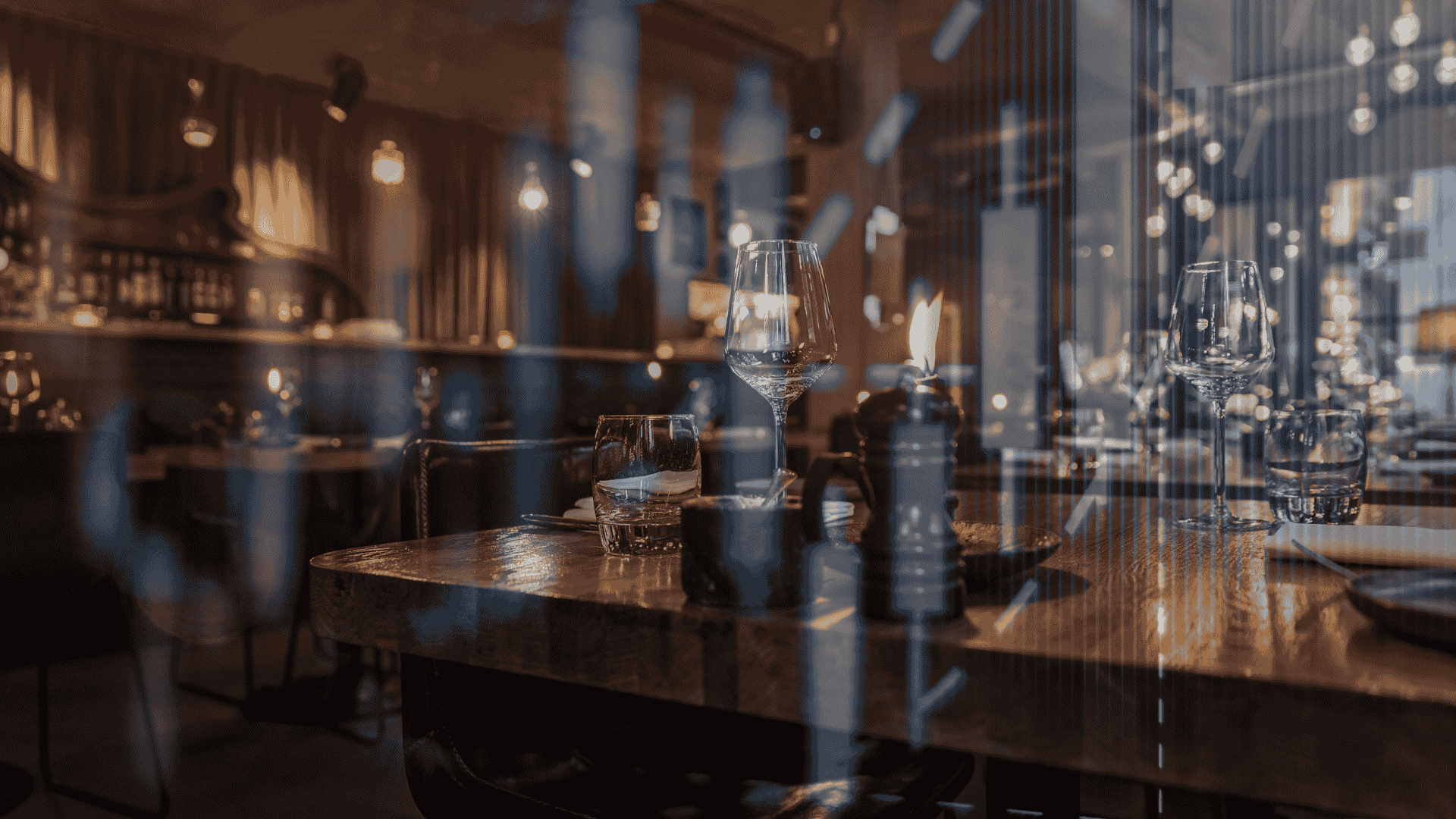An accurate restaurant sales forecast is crucial for the continued success and efficiency of your restaurant. High-quality forecasting provides data that helps you improve the profitability, customer satisfaction and general performance of your business.
Forecasts allow you to strategise a plan to improve the greatest strengths of your business and address any potential weaknesses or bottlenecks. If you are opening a new venue, a forecast can be essential to maximising your business's early success and staying afloat.
In this complete guide, we’ll take you through what you need to know about restaurant forecasting and how to use it to drive growth for your business.
What is restaurant forecasting?
Restaurant forecasting is the process of predicting the future sales of a hospitality business. This is primarily done through reviewing past restaurant sales. By analysing sales over a given time period, you can make educated estimates about your future performance.
When forecasting, you will need to consider a wide array of factors beyond past sales data. This includes current market trends, your booking data and any upcoming changes to labour or operational costs.
While a restaurant forecast will typically never be entirely accurate, it can still be a helpful tool for your business.
Why is restaurant forecasting important?
Sales forecasting is a critical step in developing effective strategies for your restaurant's future.
Without the clear, precise information that a sales forecast provides, you run the risk of losing money when making long-term decisions, like investing in an event strategy, or opening new venues. Projections also allow you to set budgets, manage cash flow, and set menu pricing with informed insights.
Great restaurant forecasting gives you the assurance that major decisions in your business are backed by data.
Understanding what the future holds for your venue is helpful in other ways, too. For example, if you expect your sales to grow significantly in the coming months, you may need to order more inventory. Or, if you predict lower demand, you can prevent overstocking and reduce food waste. Forecasting booking levels can also allow you to more efficiently manage staffing.
To get the most out of restaurant analytics, a comprehensive, multi-system approach is most useful. For example, ResDiary’s analytics suite allows you to incorporate booking data as well as information from integrations like EPOS systems. This ensures you can easily access the information you need for your forecasts.
Plus, once you’ve finalised your forecasts, it’s easy to put your new insights to use within relevant integrations and ResDiary itself.
How to forecast sales in an existing restaurant
Here are the steps to take to accurately and effectively forecast sales in your restaurant:
Review historical sales data
The main foundation of any of your forecasts will be your historical sales data. It is the primary data point for understanding your sales into the future.
If you want to forecast sales over the next six months, you can review sales data from the last six months. Or, if you expect seasonality to be a major factor, you may be better served comparing year-on-year data.
Using ResDiary POS system integrations like AccessEPOS or PowerEPOS from Triniteq, you can gather your past historical sales data quickly and efficiently. You can also use POS reports to gain further insights.
After exporting your data to a different system, such as analytics software, make sure to conduct quality assurance checks. You can do this by comparing your data to its original source.
Identify trends
Your forecasting must take note of trends for a more accurate review. For example, you might notice how much your business spiked in revenue during the summer months.
Trends can also be based on specific occasions, like public holidays or occasions like Valentine’s Day. If these trends are playing a big role in your restaurant sales, you might want to use year-on-year data to account for them.
Another type of trend to consider is the overall trajectory of the performance of your business. If your sales have been steadily growing for months, you should consider whether this growth rate is expected to continue. This can play a massive role in your sales forecast.
You can even create sales forecasts to account for varying scenarios of business growth, making sure you’re as prepared as possible for the future.
For more information on identifying trends in your restaurant, check out our complete guide to restaurant analytics.
Use booking data
Using your booking data is a great way to get further insights for sales forecasting. Reviewing your prior reservation data will help to verify your historical performance during certain time periods.
With ResDiary, you can compare reservation data as well as data from tools like W8List™ to understand the role of bookings and walk-ins in your business performance.
Booking data can also be extremely useful for adding context to upcoming time periods in your business. For example, if you want to forecast sales over the next month, your booking data over that period from the previous year is the perfect starting point.
The ResDiary table management system is the ideal tool to understand your booking data better than ever. Not only can you see historic booking numbers, but through features like booking notes, you can see all associated comments to construct a clearer picture of previous dining trends.
With ResDiary promotions, customers can even place pre-orders through our Stripe integration. Being able to align dishes with bookings allows you to forecast even more accurately, showcasing which inventory might be most popular over a certain time period, and how much revenue this is likely to generate.
Incorporate marketing campaigns
A great marketing campaign can completely throw off your restaurant’s forecasts by bringing extra attention to your venue. This is a good problem to have, but you can avoid it by factoring your marketing spend into your forecast.
For instance, if you’re planning to spend more money on social media ads, you might expect that to result in increased sales. Based on your usual return on investment (ROI) from social media marketing, this might be easier to project.
If you’re beginning to focus on other types of marketing, such as search engine optimisation (SEO), understanding your expected ROI can be much more difficult. In this case, you might create multiple forecasts estimating different levels of marketing success.
This is also a great opportunity to analyse the success of your prior marketing campaigns. Figure out how much ROI you’ve seen on these campaigns, and compare channels with each other to find your most productive marketing avenues.
By fully understanding your marketing ROI, you’ll ensure you aren’t over-committing funds and resources, and are focused on maximising revenue.
Incorporating marketing campaigns in your restaurant forecast is made easier with ResDiary. ResDiary offers a host of marketing integrations, as well as built-in email marketing functionality. This means you’ll have plenty of data at your disposal when you’re using our analytics suite to forecast sales.
When you carefully analyse the performance of your campaigns, you’ll be able to use these tools more effectively than ever.
Consider other internal and external factors
There are additional external and internal factors to consider when forecasting restaurant sales. These can include:
- Market conditions: Economic factors outside your business can still affect your sales forecasting. As we have seen in our recent hospitality trend reports for Australia and New Zealand, and the UK and Ireland, difficult economic conditions can result in fewer customers.

- Venue expansions: If you have opened up a new section for your business, like adding an outdoor area, you can expect increased sales over the warmer months. Make sure to factor this into your restaurant forecast.
- Local events: Major events in your area can cause a spike in visitors. For example, you can expect more customers if there is a big concert taking place near your restaurant.
- Promotional events: Have a big event coming up in your business? From a Christmas event to a live music night, you’ll need to consider how the success of these events will impact your forecasts. To make sure your events affect your forecasts in a positive way, check out our complete guide to maximising revenue with events.
How to forecast sales for a new restaurant
Naturally, forecasting sales in a brand new restaurant is a difficult proposition. While it’s virtually impossible to come up with a fully accurate figure, you can approximate sales in a new restaurant with the following information:
- Seats: How many customers can you seat in your restaurant at a given time? Then, looking at competing venues in your area, you can estimate how busy your restaurant will be across a single service.
- Menu prices: How much are you charging for your food and drinks? Based on this, you can roughly estimate how much money an average customer will spend in your business.
- Operating hours: How long will you be open for, and how many customers can you expect to serve in a single service?
With this information, you can construct a rough estimate of your restaurant sales.
For instance, if you expect to serve 30 customers in a single weekend dinner service, and the average spend per head is expected to be $82 (according to 2025 Australia and New Zealand data), your sales across that service are forecasted to be $2,460. If you expect to serve 50 customers in a single weekend dinner service, and the average spend per head is expected to be £45 (according to 2025 UK and Ireland data), your sales across that service are forecasted to be £2,250.
It all depends on your capacity and the average spend per head in your venue.
You can refine your forecast by taking into consideration different days of the week and further analysing market trends. It’s far from perfect, but it can be a useful way to help know what to expect in your new restaurant.
How to use sales forecasting in a restaurant
Proper use of sales forecasting can help you address obstacles and make necessary changes to your business. Here are some of the most effective ways to use sales forecasting in your business:
Strategise
With a fuller understanding of incoming revenue, you can make educated decisions to improve your business and plan your future. This can include major choices, such as deciding to open a new venue due to expected finances from restaurant forecasts.
Or, you may simply decide your forecasted sales are not as high as you would like, and begin a renewed focus on marketing or other areas. The process of forecasting sales can also shed light on what is driving the most profit in your business, such as your most successful marketing campaigns.
Just remember not to base your decisions purely on forecasted sales. This could lead to over-investment, seriously damaging your business.
Optimise operations
A thorough sales forecast can help to improve the following aspects of your restaurant business:
- Inventory management: You can use forecasts to more accurately determine how much stock will be required for certain periods. This helps you save in areas like food wastage.
- Staff management: Forecasts will help you more accurately determine your staffing requirements for certain periods. Forecasts are especially useful for this when booking data has been incorporated.
- Sales forecasting: Complement your marketing strategy with sales forecasting. For example, if your annual holiday rush doesn’t look like it will be as profitable as usual, it might be time for a new marketing strategy.
Adjust pricing
Your restaurant might want to introduce premium pricing during your busiest periods. With an accurate forecast, you can choose when to increase prices more precisely. Or, during slower periods, you may offer more discounts or create specials to bring in more patrons.
Key restaurant forecasting software
Restaurant forecasting is a big job, and you need the right tools to do it properly. Here are some key pieces of software for accurate restaurant forecasting:
EPOS system
An EPOS system doesn’t just help you track sales or process payments. They can also help you capture clear, confirmable sales data. This is the foundational data of your forecasting.
EPOS systems also help you gain further insights into what is most profitable at your business. You can analyse which items sold best during certain periods, or customer patterns during different times.
Table management system
By using a quality table management system, you can incorporate detailed booking data into your sales forecast.
Table management systems like ResDiary integrate with EPOS software, allowing for two-way data flow. This helps to make your restaurant forecasts more accurate and insightful.
ResDiary users can incorporate even more data to their sales forecasts. That includes marketing data from ResDiary’s email marketing tools and integrations. This empowers your business to create the best possible forecasts.
Data analytics systems
A good data analytics system captures important data for your business and has the tools to help you compartmentalise it. With a system like ResDiary’s analytics suite, you can analyse all the data you need for restaurant forecasting, including past sales, booking data and more.
You can also look at your forecasts alongside other data like reservations and labour costs. This gives you all the information you need to make the best decisions for your business.
For more information on software you can use to improve decision-making in your venue, check out our in-depth guide to restaurant tech tools.
Understand your future performance with ResDiary
ResDiary’s approach to data makes it the perfect tool for your restaurant forecasts. By giving you complete oversight of relevant customer data, as well as from our integrations, we empower you to create the best forecasts for your business.
You can even use our analytics suite to help create your forecasts. Get the complete scope of your restaurant, from day-to-day sales to upcoming booking data.
Restaurant forecasts don’t just help you understand your future financials. They can also be vital tools for optimising your operations in the here and now.










